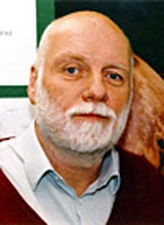Horst Uwe Keller

The 2008 Christiaan Huygens Medal is awarded to Horst Uwe Keller for his significant achievements in spacecraft investigations of the solar system, through his innovation and development of cameras and related instrumentation.
Dr. Keller was born in Prague, January 25, 1941.
Since 1975 he has been with the Max-Planck-Institute for Aeronomy, now Max-Planck-Institute for Solar System Research, Katlenburg-Lindau, of which during the past 20 years he has been the Head of the Planetary Research Group. Dr. Keller retired in 2006 but is still active on consultancy basis.
Dr. Horst Uwe Keller has made important contributions to the exploration of our solar system, particularly in the field of cometary exploration (Giotto-Halley Multicolour Camera and the OSIRIS instrument on Rosetta). He has, probably more than anyone else in Europe, promoted pushed and participated in a large number of important ESA and NASA missions. His instrument developments and innovations and has led to a really significant progress in European (and the US) planetary exploration.
He has contributed with significant hardware to 12 space missions and he has been the Principle Investigator for four major space instruments:
- Halley Multicolour Camera (Giotto)
- SIR Infrared Spectrometer for SMART 1
- OSIRIS Science Imagers (Rosetta)
- Framing Camera (DAWN)
Dr. Keller has authored/co-authored about 300 publications in the research fields Physics and Dynamics of Comets, Stellar Atmospheres, Interplanetary/interstellar gas, Planetary Atmospheres, Atmosphere-Soil Interaction, Methods of Image processing and Instrumentation. 127 articles in refereed (ISI-indexed) journals log an average of 19 citations per paper and four of these have more than 100 citations.
